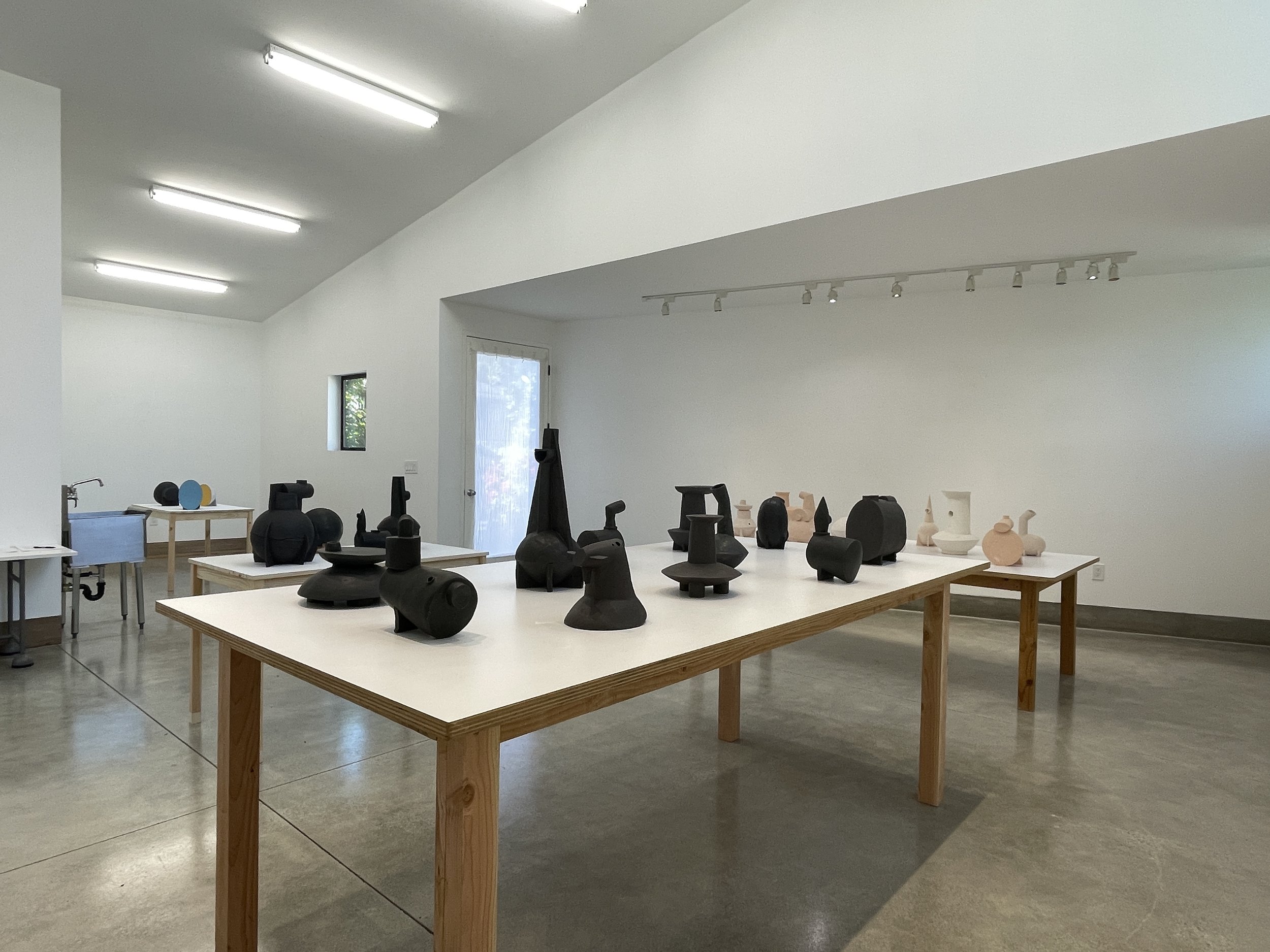Armatures/Amateurs
November 18th thru December 16th
Erik Otsea is an artist I am uniquely qualified to write on. We were friends in High School, earned our BFAs and MFAs together, and lived and worked in a shared studio. We collaborated as artists for over a decade, passing a single painting between each other and exhibiting photographs of the results. Erik would consistently surprise me with his formal inventiveness. He sought aesthetic inspiration in the unlikeliest places. A ski binding, for instance, was a motif he repeated with hard-headed insistence, probably because of its brand-name – LOOK – and yet he also managed to make it count compositionally for its arrow-like shape. Duchampian punning was part of this game; Erik, too, was curious about the relation between language and objects. At one point, he constructed a kind of alphabet out of wooden dowels, carefully mitered together to yield X’s and O’s and other shapes not readily traceable to our standard inventory of linguistic characters. These objects were made to be photographed, and occasionally he also transferred their image onto our painting, rendering their smoothly curving topographies with very rough, unblended brushstrokes. The whole series of photographs, now considerably weathered, still hangs in his studio. I cannot help but think that they continue to inform his output, which more recently has taken a turn toward ceramics.
Erik is not new to this field: he was molding clay before he took up photography and then painting. Yet his return to ceramics has not occurred at the expense of these other mediums, for everything produced in-between is folded into this latest body of work. Objects were dematerialized into images, and these are rematerialized into objects, now image-objects, but equally word-things. The lexical prompts that lie at their origins have held fast throughout.
Faced with these new works, I begin to wonder if they really belong to the medium of ceramics or just treat it as their material. Certainly, they allude to such household items as plates and vessels of all sorts – cups, gourds, carafes, bottles, etc. – which we readily associate with ceramics. But then they also incline in a more technical direction, invoking comparisons to automotive engine parts, for instance, which sometimes are also made of ceramics. And, further, they are insistently anthropomorphic. One would not be remiss to see in them some trace of the ancient fetish and totem animal, right along with all their modernist reworkings. Erik is fond of the French phrase “petit machin” – which can be translated as “little something,” and typically relates to something important and influential that somehow eludes description. These little objects that he presents to our inspection are just such “machins” that refuse to sit still in the mind. They are machines that incline in the direction of art – aesthetic machinations.
Why not categorize them as table-top sculptures? Many are propped up on the splints that allowed them to retain their shape through the firing stage. These artifacts of process are retained in their finished form, to serve as their “legs.” They stand independently atop their table, which thus becomes less a base than a ground – and, moreover, because there are many of them, a communal ground, a space of congregation, like a town square. Erik has shown me a working drawing for the quasi-letter forms mentioned earlier, where he began to elaborate the formal lexicon that remains in evidence here. Somewhat absurdly, each one was given a name: “tonga,” “spindle,” “sinking ship,” etc. From the very outset, then, this artist’s permutational system was designed to yield not only variations on a theme but a collection of autonomous entities. Upon their tabletop ground, these “petits machins” pursue their own private interests, whatever these might be. Yes, they are appealing in their idiomatic contours, their eccentricity. But look again for what lies hidden within them: the power of assembly: the single “grand machin” that could rise from these parts.
--Jan Tumlir










